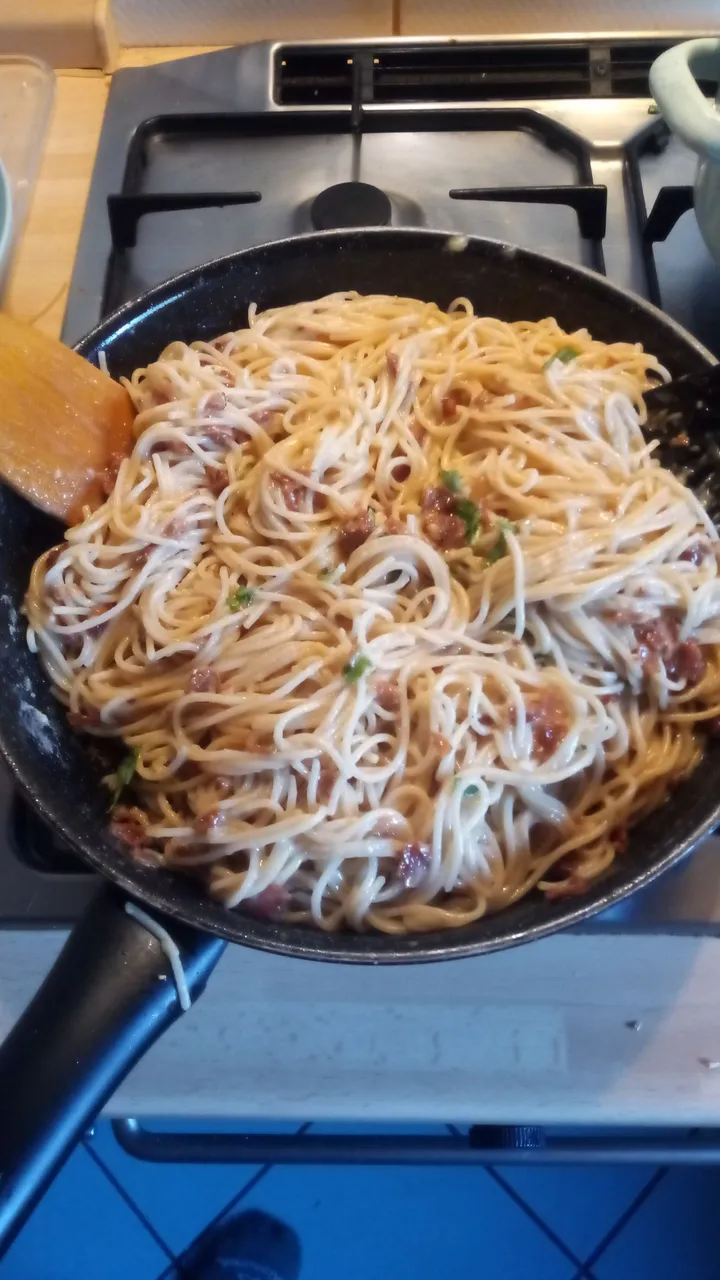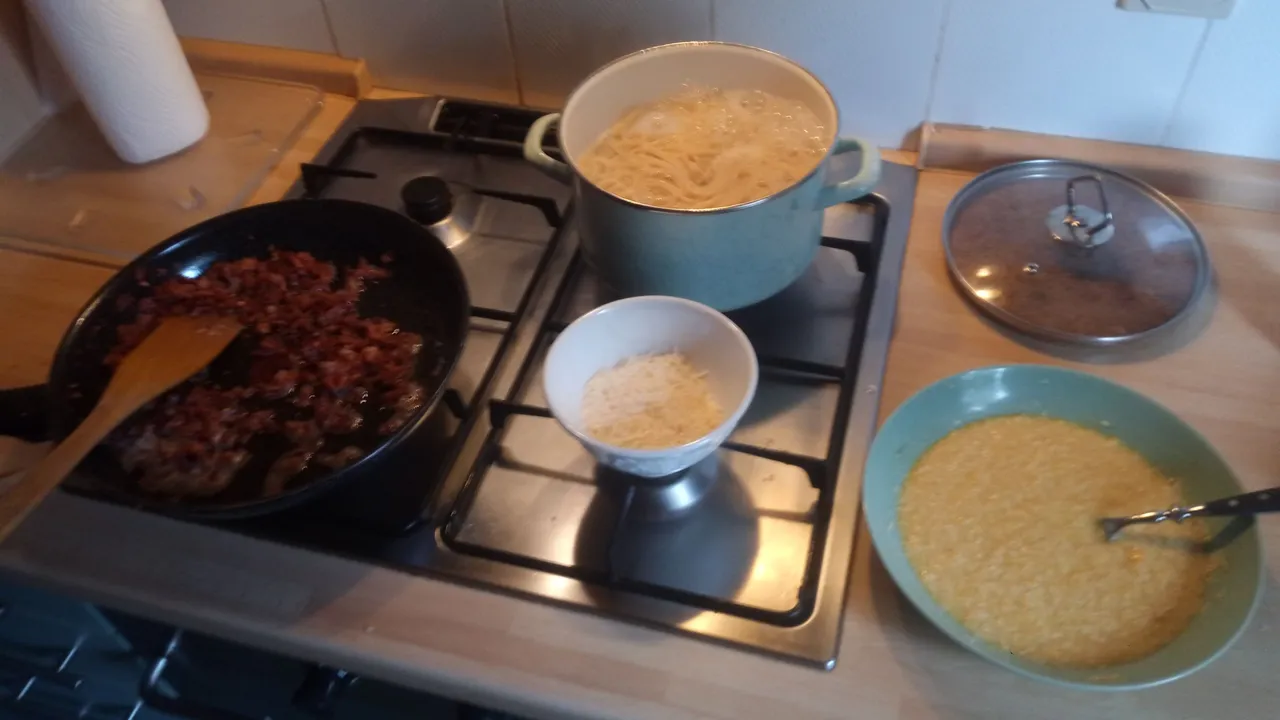You know how sometimes people make delicious dishes, and call them something which ... well, they clearly are not. This gets exacerbated even more when there are various languages involved, where the same word actually means different things in different places. I was not immune to this either, as I discovered recently, when discussing the definition of Spaghetti Carbonara.
You Mean Pasta With A White Sauce?
To simplify classifications, and since I tend to go with my gut feeling anyway (especially when cooking), I basically make three kinds of pasta sauce: the red one, made with tomatoes, the green one, which is pretty much pesto, and the white one, based on cream. Each one can be tweaked and added to, making it meaty or vegan, spicy or simple, and using a variety of herbs, spices, and veggies. More often than not, they end up being delicious creations, however, not carbonara.

A Simple But Very Specific Recipe
Bacon (or panceta) is an essential ingredient in Carbonara, that can't be left out. For 300 g of Spaghetti I used 100 g of bacon, which I cut in small bits and fried in a pan on slow heat, using 50 g of butter and added three large cloves of garlic. Meanwhile I cooked the pasta in a pot and ground the cheese.
Pecorino and Parmigiano are the cheeses that define carbonara. And no, you can't omit or substitute them with anything! That is, sure you can, but then it won't be the real deal any longer. For my recipe I ground about 50 g of each type.
When the pasta was almost ready, and the bacon was golden crispy, still simmering in the pan on low heat, I cracked three eggs into a bowl, and mixed the cheeses into them. I added a bit of salt and pepper, to let the eggs tie up their taste, and then proceeded with the last, most crucial step.

The Art of Carbonara
Normally when my pasta is al dente, I simply strain the water out, dumping it down the drain. This time, however, I used a pair of salad forks to lift all the spaghetti out of the water, and into the frying pan. The drips of water that inadvertently accompanies the pasta is actually important here. Now I can turn the heat completely off, letting just the hot pasta covered in bacon grease cook the eggs and melt the cheese.
After a couple of stirs, I pour the egg-cheese-mix into the pan as well. Now comes the most important part of the recipe: keeping the pasta moving! The best technique for spaghetti that I found, is by pulling them high above the pan, then letting it down again. The idea is to make sure that the eggs don't stick together, like in an omelette, but cover the pasta completely, along with the melted cheese. Adding a few tablespoons of the water the pasta cooked in will make the sauce even creamier.
All Done!
In the end I like to grate a handful of the two cheeses, just to sprinkle on top. You may also add a few leaves of basil, or whatever else looks pretty. But this is basically all it takes to make a real Carbonara sauce. And yes, the best time to eat it is also right away, while it's still hot. So enjoy trying to make your own!
To see more of my recipes and food related posts, please visit my You Are What You Eat, and What to Eat in Mexico collections.
